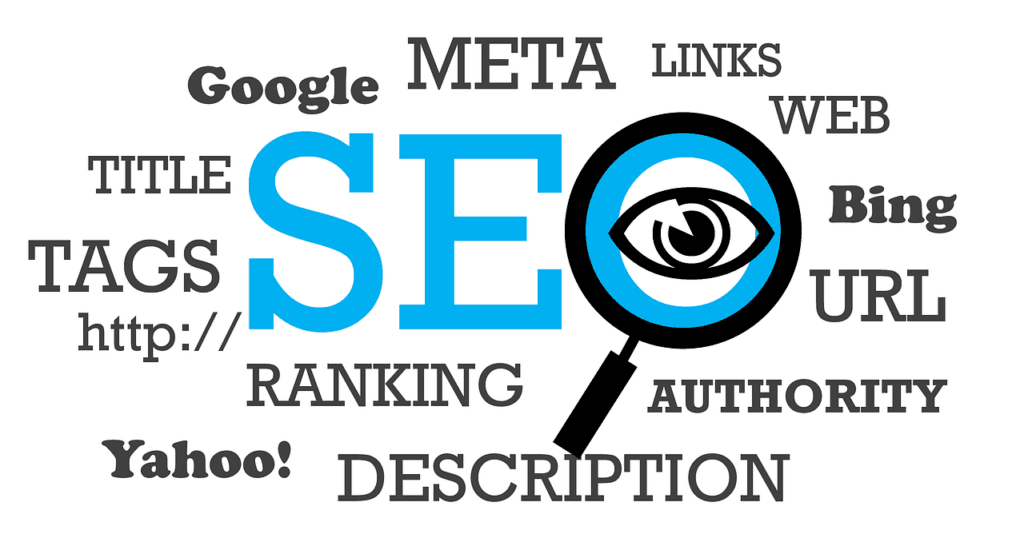This Article has been revised, edited and added to, by Poulomi Chakraborty.
- Understanding Geo-Targeting in Healthcare SEO
- Creating Localized Content for Healthcare SEO
- Understanding Your Local Audience
- Local Health Issues and Trends
- Highlighting Local Events and Initiatives
- Showcasing Patient Stories and Testimonials
- Creating Location-Specific Service Pages
- Utilizing Local News and Updates
- Leveraging Social Media for Local Engagement
- Measuring the Success of Localized Content
- Optimizing Your Website for Local Search
- The Power of Google My Business in Geo-Targeting
- Local SEO for Multiple Locations
- Measuring and Analyzing Your Local SEO Efforts
- Experts Opinion
- Final Thoughts
In the world of healthcare, reaching the right audience at the right time is crucial. With the increasing competition among healthcare providers, it’s important to ensure your services are visible to the people who need them most. One effective way to achieve this is through geo-targeting in SEO. Geo-targeting allows you to tailor your content and marketing efforts to specific geographical locations, helping you connect with potential patients in your area. In this article, we will explore various geo-targeting strategies that can enhance your healthcare SEO and drive more local traffic to your website.
Understanding Geo-Targeting in Healthcare SEO

Geo-targeting, also known as local SEO, involves optimizing your website to attract search engine users in specific locations. This is particularly important for healthcare providers, as patients usually seek medical services near their homes or workplaces. By focusing on local SEO, you can improve your visibility in local search results and attract more patients from your surrounding areas.
The Importance of Local SEO in Healthcare
Local SEO is essential for healthcare providers for several reasons. First, most patients prefer to visit healthcare facilities that are conveniently located. When your website appears at the top of local search results, you increase the likelihood that potential patients will choose your services over those of competitors. Additionally, local SEO helps you build trust within your community by making it easier for local residents to find and access your services.
How Geo-Targeting Works
Geo-targeting involves several key elements, including:
- Local Keywords: Incorporating location-specific keywords into your content and metadata to signal to search engines the areas you serve.
- Google My Business: Creating and optimizing your Google My Business profile to appear in local search results and on Google Maps.
- Local Citations: Ensuring your business information is consistent across various online directories and platforms.
- Localized Content: Creating content that addresses the specific needs and interests of your local audience.
Comparing Traditional SEO and Local SEO
While traditional SEO focuses on improving your website’s visibility on a national or global scale, local SEO hones in on specific geographical areas. This distinction is crucial for healthcare providers, as the goal is to attract patients who are geographically close to your facility.
Traditional SEO
Traditional SEO involves optimizing your website to rank for broad keywords that attract a wide audience. This can include on-page optimization, link building, and content marketing. While these strategies are effective for increasing overall visibility, they may not always result in local traffic, which is essential for healthcare providers.
Local SEO
Local SEO, on the other hand, focuses on reaching users in specific locations. This involves optimizing your website for local keywords, managing local business listings, and encouraging reviews from local patients. Local SEO tactics are designed to improve your visibility in local search results and make it easier for potential patients to find your services.
The Role of Local Keywords
One of the most important aspects of geo-targeting is the use of local keywords. These are keywords that include location-specific terms, such as the name of your city, neighborhood, or region. By incorporating local keywords into your content, you signal to search engines that your website is relevant to users in those areas.
For example, instead of targeting the broad keyword “primary care doctor,” you might use “primary care doctor in [City Name].” This helps ensure that your website appears in search results when users in your area are looking for a primary care doctor.
The Power of Google My Business
Google My Business (GMB) is a powerful tool for improving your local SEO. By creating and optimizing your GMB profile, you can increase your chances of appearing in local search results and on Google Maps. This makes it easier for potential patients to find your business, see your contact information, read reviews, and get directions to your facility.
When setting up your GMB profile, make sure to provide accurate and up-to-date information, including your business name, address, phone number, and hours of operation. Additionally, encourage satisfied patients to leave reviews on your GMB listing, as positive reviews can boost your visibility and credibility in local search results.
Local Citations and Consistency
Another important aspect of geo-targeting is managing local citations. A citation is any mention of your business name, address, and phone number (NAP) on other websites, such as online directories, social media platforms, and review sites. Consistent and accurate citations help search engines verify your business information and improve your local search rankings.
Ensure that your NAP information is consistent across all online platforms. Inconsistent or outdated information can confuse search engines and potential patients, leading to lower search rankings and missed opportunities.
Creating Localized Content for Healthcare SEO

Localized content is a key component of geo-targeting in healthcare SEO. By creating content that speaks directly to the needs and interests of your local audience, you can improve your website’s relevance and authority in local search results. Localized content can take many forms, including blog posts, service pages, and community event announcements.
Understanding Your Local Audience
To create effective localized content, it’s important to understand the demographics, interests, and needs of your local audience. Conducting market research can help you gather insights into the types of health concerns and services that are most relevant to your community. This information can guide your content strategy and ensure that you are addressing the topics that matter most to your potential patients.
Local Health Issues and Trends
One way to create engaging localized content is to focus on health issues and trends that are specific to your area. For example, if your community has a high prevalence of a particular health condition, you can create content that addresses this issue and offers solutions or preventive measures. This not only demonstrates your expertise but also shows that you are attuned to the needs of your local population.
Highlighting Local Events and Initiatives
Another effective strategy for localized content is to highlight local events, health fairs, and community initiatives. By promoting these events on your website and social media channels, you can increase your visibility in local search results and foster a sense of community engagement. Additionally, partnering with local organizations for events or initiatives can help build your reputation as a trusted healthcare provider in your area.
Showcasing Patient Stories and Testimonials
Patient stories and testimonials are powerful tools for building trust and credibility. By featuring stories from local patients who have had positive experiences with your healthcare services, you can create a personal connection with potential patients in your community. These stories can be shared on your website, social media, and even in local media outlets to reach a broader audience.
Creating Location-Specific Service Pages
In addition to blog posts and articles, consider creating location-specific service pages on your website. These pages should include detailed information about the services you offer in each location, along with local keywords and contact information. This not only helps with SEO but also provides potential patients with the information they need to make informed decisions about their healthcare.
Utilizing Local News and Updates
Keeping your audience informed about local news and updates related to healthcare can also enhance your local SEO efforts. This could include information about new healthcare regulations, public health advisories, or changes in your services due to local events or conditions. By providing timely and relevant information, you position yourself as a reliable source of healthcare knowledge in your community.
Leveraging Social Media for Local Engagement
Social media platforms are valuable tools for engaging with your local audience. By sharing localized content, interacting with followers, and participating in community discussions, you can increase your visibility and build stronger relationships with potential patients. Social media also allows you to promote your content and events to a targeted local audience, driving more traffic to your website and increasing your local search rankings.
Measuring the Success of Localized Content
To ensure that your localized content is effective, it’s important to track and measure its performance. Use tools like Google Analytics to monitor metrics such as website traffic, engagement, and conversions. Pay attention to the geographic locations of your visitors to see if your content is reaching your target audience. Adjust your content strategy as needed based on these insights to continuously improve your local SEO efforts.
Optimizing Your Website for Local Search

Optimizing your website for local search involves several technical and strategic elements. These optimizations ensure that your site is easily discoverable by search engines and provides a seamless experience for local users. Here, we will discuss various techniques to enhance your website’s local SEO performance.
On-Page SEO for Local Search
On-page SEO refers to the practice of optimizing individual web pages to rank higher in search engines and attract more relevant traffic. For local SEO, this involves incorporating local keywords and optimizing various on-page elements.
Title Tags and Meta Descriptions
Title tags and meta descriptions are crucial for local SEO. Ensure that your title tags include relevant local keywords and accurately describe the content of each page. For example, a title tag might read, “Primary Care Services in [City Name] | [Your Clinic’s Name].” Similarly, meta descriptions should provide a brief, compelling summary of the page content and include location-specific terms.
Header Tags and Content
Using header tags (H1, H2, H3, etc.) to structure your content not only improves readability but also helps search engines understand the hierarchy of information on your page. Make sure to incorporate local keywords into your header tags naturally. For instance, an H1 tag might read, “Comprehensive Healthcare Services in [City Name].”
When writing your content, aim to address the specific needs and concerns of your local audience. Provide detailed information about your services, highlight any unique offerings, and emphasize your connection to the local community.
URL Structure
Creating a clear and descriptive URL structure can improve your local SEO. Include location-specific keywords in your URLs where appropriate. For example, a URL might be structured as “www.yourclinic.com/services/primary-care-[city-name].” This not only helps search engines understand the geographic relevance of your content but also makes it easier for users to navigate your site.
Mobile Optimization
With the increasing use of smartphones, optimizing your website for mobile devices is essential for local SEO. Mobile-friendly websites provide a better user experience and are favored by search engines, particularly for local searches.
Responsive Design
A responsive design ensures that your website adapts to different screen sizes and devices. This means that whether a user is accessing your site on a desktop, tablet, or smartphone, they will have a consistent and user-friendly experience. Responsive design is a key factor in maintaining low bounce rates and high engagement, both of which positively impact your SEO.
Page Speed
Page speed is another critical aspect of mobile optimization. Slow-loading pages can frustrate users and lead to higher bounce rates. Use tools like Google PageSpeed Insights to identify and fix issues that might be slowing down your site. Common solutions include optimizing images, leveraging browser caching, and minimizing JavaScript and CSS.
Local Schema Markup
Schema markup, also known as structured data, helps search engines understand the content of your website and display rich snippets in search results. For local SEO, implementing local schema markup can enhance your visibility in local searches.
Implementing Local Schema
Local schema markup provides search engines with detailed information about your business, such as your name, address, phone number, business hours, and services. Adding this structured data to your website can improve your chances of appearing in rich results, such as local business cards and knowledge panels.
For example, the schema markup for a local clinic might look like this:

Managing Local Listings and Directories
Consistent and accurate business information across online directories and listings is vital for local SEO. This consistency helps search engines verify your business details and improves your local search rankings.
Claiming and Optimizing Listings
Start by claiming your business listings on major platforms like Google My Business, Yelp, and Bing Places for Business. Ensure that your business name, address, and phone number (NAP) are consistent across all listings. Inaccurate or inconsistent information can confuse search engines and potential patients, negatively impacting your local SEO.
Encouraging Patient Reviews
Patient reviews play a significant role in local SEO. Positive reviews not only build trust and credibility but also boost your visibility in local search results. Encourage satisfied patients to leave reviews on your Google My Business profile and other review platforms. Responding to reviews, both positive and negative, shows that you value patient feedback and are committed to providing excellent care.
Leveraging Local Backlinks
Backlinks, or inbound links from other websites to your own, are a key factor in SEO. For local SEO, earning backlinks from local websites can significantly enhance your authority and relevance in local search results.
Building Relationships with Local Businesses
One effective strategy for earning local backlinks is to build relationships with other local businesses and organizations. Consider partnering with local health organizations, schools, and community groups. These partnerships can lead to opportunities for guest blogging, joint events, and other collaborations that result in valuable backlinks.
Sponsoring Local Events and Charities
Sponsoring local events and charities is another way to gain local backlinks. When you sponsor an event or charity, your business is often mentioned and linked on the event’s website, providing a valuable backlink. Additionally, participating in local events can increase your visibility and strengthen your ties to the community.

The Power of Google My Business in Geo-Targeting
Google My Business (GMB) is a cornerstone of local SEO, particularly for healthcare providers. An optimized GMB profile can significantly boost your visibility in local search results and on Google Maps. Here, we will delve into the importance of GMB and how to make the most of this powerful tool.
Setting Up Your Google My Business Profile
Creating a GMB profile is straightforward, but it’s essential to ensure that all information is accurate and complete. Follow these steps to set up and optimize your GMB profile:
Creating and Verifying Your Profile
- Sign Up for Google My Business: Go to the GMB website and sign in with your Google account. If you don’t have a Google account for your business, you’ll need to create one.
- Enter Your Business Information: Provide accurate details about your healthcare facility, including your business name, address, phone number, website, and hours of operation. It’s crucial that this information matches what’s on your website and other online listings.
- Verify Your Business: Google will send a verification code to your business address. Enter this code in your GMB account to verify your listing. Verification ensures that your business is legitimate and that the information you provided is accurate.
Optimizing Your Profile
Once your profile is set up and verified, it’s time to optimize it for local SEO:
- Complete Every Section: Ensure all fields are filled out, including categories, services, attributes, and descriptions. The more information you provide, the easier it is for potential patients to find and choose your services.
- Add High-Quality Photos: Upload professional photos of your facility, staff, and services. High-quality images make your profile more attractive and engaging.
- Use Keywords Wisely: Incorporate relevant local keywords into your business description and services. This helps Google understand what your business offers and improves your chances of appearing in local searches.
- Collect and Respond to Reviews: Encourage satisfied patients to leave reviews on your GMB profile. Responding to reviews, both positive and negative, shows that you value feedback and are committed to excellent patient care.
Utilizing GMB Features
Google My Business offers several features that can enhance your local SEO and engage potential patients:
Google Posts
Google Posts allow you to share updates, news, and offers directly on your GMB profile. These posts appear in your business listing on Google Search and Maps, providing additional opportunities to engage with local users. Use Google Posts to announce new services, share health tips, or promote upcoming events.
Q&A Section
The Q&A section on your GMB profile lets potential patients ask questions about your services. Monitor this section regularly and provide prompt, helpful answers. This not only improves patient engagement but also builds trust and credibility.
Booking Button
If you offer online appointment booking, you can add a booking button to your GMB profile. This makes it easy for potential patients to schedule appointments directly from your listing, increasing convenience and reducing barriers to care.
Leveraging Insights from GMB
Google My Business provides valuable insights into how users interact with your profile. These insights can help you refine your local SEO strategy and improve your overall online presence.
Understanding GMB Insights
GMB Insights offers data on several key metrics, including:
- Search Queries: The keywords and phrases users search to find your business.
- Views: The number of times your profile, photos, and posts have been viewed.
- Actions: The actions users take on your profile, such as visiting your website, requesting directions, or calling your business.
- Customer Engagement: The number of clicks, calls, and direction requests your profile receives.
Using Insights to Improve Your Strategy
Analyze the data provided by GMB Insights to identify trends and areas for improvement. For example, if you notice that certain keywords drive a lot of traffic to your profile, consider incorporating those keywords into your website content and other online listings. If your profile receives many views but few actions, consider enhancing your profile with more engaging content or offers.
Local SEO for Multiple Locations

For healthcare providers with multiple locations, managing local SEO can be more complex. Each location needs its own tailored SEO strategy to ensure visibility in local search results. Here, we will discuss strategies to optimize your website and online presence for multiple locations.
Creating Individual Location Pages
To effectively manage SEO for multiple locations, it’s crucial to create dedicated pages for each location on your website. These pages should include detailed information about the services offered, contact details, and any unique features of each location.
Content for Location Pages
Each location page should be optimized with local keywords and provide valuable information for potential patients. Key elements to include are:
- Business Name, Address, and Phone Number (NAP): Ensure the NAP information is consistent with what is listed on Google My Business and other directories.
- Operating Hours: Clearly state the hours of operation for each location.
- Services Offered: Detail the specific services available at each location, highlighting any specialties or unique offerings.
- Staff Information: Introduce the healthcare professionals working at each location, including their qualifications and specialties.
- Local Keywords: Incorporate location-specific keywords throughout the content to improve local search rankings.
- Patient Reviews and Testimonials: Include reviews and testimonials from patients who have visited each specific location.
Managing Multiple Google My Business Listings
Each location should have its own Google My Business listing. This helps ensure that each location appears in local search results and on Google Maps. Here’s how to manage multiple GMB listings effectively:
Setting Up Listings
- Create Individual Listings: Set up a separate GMB profile for each location. Ensure that the business name, address, and phone number are accurate and consistent.
- Verify Each Location: Follow the verification process for each GMB listing to confirm the legitimacy of each location.
Optimizing Listings
- Complete All Fields: Provide detailed information for each location, including services offered, operating hours, and photos.
- Encourage Reviews: Actively encourage patients to leave reviews for the specific location they visited. This helps build credibility and improve local search rankings.
- Monitor and Respond to Reviews: Regularly monitor reviews for each location and respond to them promptly. This shows that you value patient feedback and are committed to providing excellent care.
Using Local Business Directories
In addition to Google My Business, listing your healthcare locations on other local business directories can improve your local SEO. Ensure that the information on these directories is accurate and consistent with your website and GMB listings.
Popular Directories
- Yelp: Create and optimize profiles for each location on Yelp. Encourage patients to leave reviews and respond to feedback.
- Healthgrades: Ensure that each location is listed on Healthgrades with accurate information about services and staff.
- Local Directories: List your locations on relevant local directories and health-related websites. These backlinks can enhance your local SEO efforts.
Implementing Local Backlink Strategies
Building local backlinks for each location can improve your website’s authority and local search rankings. Focus on earning backlinks from local websites, news outlets, and community organizations.
Strategies for Earning Local Backlinks
- Community Involvement: Participate in local events, health fairs, and community initiatives. Partner with local organizations to host events or offer health screenings.
- Local Sponsorships: Sponsor local events, sports teams, or charities. These sponsorships often include backlinks from the event’s website.
- Guest Blogging: Write guest blog posts for local websites, news outlets, or health blogs. Ensure that each post includes a link back to the specific location page on your website.
Measuring and Analyzing Your Local SEO Efforts

To ensure that your local SEO strategies are effective, it’s crucial to measure and analyze your efforts regularly. By tracking key metrics and making data-driven adjustments, you can continuously improve your local search visibility and attract more patients.
Key Metrics to Track
Several key metrics can help you gauge the success of your local SEO campaigns. These metrics provide insights into how well your website and online listings are performing in local search results.
Organic Traffic
Organic traffic refers to the number of visitors who come to your website from search engine results. Monitoring organic traffic can help you understand how well your local SEO efforts are driving visitors to your site. Use tools like Google Analytics to track organic traffic and identify trends over time.
Local Search Rankings
Tracking your website’s rankings for local keywords is essential for measuring your local SEO success. Use tools like Google Search Console, Moz, or SEMrush to monitor your rankings for key local search terms. Pay attention to changes in rankings and adjust your strategies as needed to maintain or improve your positions.
Google My Business Insights
Google My Business provides valuable insights into how users interact with your GMB profile. Key metrics to track include:
- Search Queries: The keywords and phrases users search to find your business.
- Views: The number of times your GMB profile, photos, and posts have been viewed.
- Actions: The actions users take on your profile, such as visiting your website, requesting directions, or calling your business.
Analyzing these metrics can help you understand which aspects of your GMB profile are performing well and where improvements are needed.
Local Citations
Local citations refer to mentions of your business name, address, and phone number (NAP) on other websites. Use tools like Moz Local or Yext to track the number and quality of your local citations. Ensuring consistent and accurate citations across various platforms can improve your local search rankings.
Online Reviews
Online reviews play a significant role in local SEO. Monitor the number and quality of reviews on platforms like Google My Business, Yelp, and Healthgrades. Pay attention to overall ratings, review frequency, and the sentiment of reviews. Responding to reviews promptly and professionally can enhance your online reputation and improve patient trust.
Analyzing Local SEO Performance
Once you’ve gathered data on key metrics, it’s time to analyze your local SEO performance. This involves identifying trends, evaluating the effectiveness of your strategies, and making informed decisions to optimize your efforts.
Identifying Trends
Look for patterns and trends in your local SEO data. For example, if you notice a spike in organic traffic after publishing localized content or optimizing your GMB profile, this indicates that your efforts are paying off. Conversely, if you see a decline in rankings or traffic, investigate potential issues and make necessary adjustments.
Evaluating Effectiveness
Assess the effectiveness of your local SEO strategies by comparing performance metrics against your goals. Are you seeing an increase in local search rankings and organic traffic? Are more patients finding and engaging with your GMB profile? Use these insights to determine which strategies are working well and which areas need improvement.
Making Data-Driven Adjustments
Based on your analysis, make data-driven adjustments to your local SEO strategies. This could involve optimizing underperforming pages, creating more localized content, or enhancing your GMB profile. Continuously monitor your metrics and refine your approach to achieve better results over time.
Tools for Measuring Local SEO
Several tools can help you track and analyze your local SEO performance. These tools provide valuable insights and make it easier to manage your local SEO efforts.
Google Analytics
Google Analytics is a powerful tool for tracking website traffic and user behavior. Use it to monitor organic traffic, user engagement, and conversions. Set up custom reports to track key metrics related to your local SEO efforts.
Google Search Console
Google Search Console provides insights into your website’s search performance. Use it to monitor local search rankings, track search queries, and identify issues that may be affecting your visibility in local search results.
Moz Local
Moz Local helps you manage your local citations and ensure that your business information is consistent across various platforms. Use it to track the number and quality of your local citations and identify opportunities for improvement.
SEMrush
SEMrush is an all-in-one SEO tool that offers features for tracking local search rankings, analyzing competitors, and conducting keyword research. Use it to monitor your local SEO performance and gain insights into your competitors’ strategies.
Experts Opinion

As a seasoned SEO expert with a focus on the healthcare and medical industry, I can provide valuable insights into the tactics and strategies that yield successful results in this specific niche. From my experience, one industry-specific hack that has proven effective is optimizing website content with relevant medical keywords and incorporating schema markup to enhance search engine visibility. This helps search engines understand the context of the content and improves the chances of ranking higher in search results.
In addition, I recently conducted an experiment where I implemented a comprehensive backlink strategy for a healthcare website. By reaching out to authoritative medical websites and securing high-quality backlinks, we were able to significantly improve the website’s organic rankings and increase its visibility in search engine results pages.
Personally, I have implemented these strategies for several healthcare and medical websites, and the results have been remarkable. By combining technical SEO techniques, content optimization, and a strong backlink profile, these websites have experienced substantial organic traffic growth and improved online visibility.
Keith Sant, SEO Meets REI

Trust and Credibility: More than any other industry, healthcare demands trust. We ensure every piece of content is backed by credible sources, often linking to established medical journals or institutions. This not only boosts our E-A-T (Expertise, Authoritativeness, Trustworthiness) but also provides users with confidence in the information they’re consuming. Local SEO: Many healthcare providers serve local communities. We’ve found immense success in optimizing Google My Business listings, gathering genuine patient reviews, and creating localized content. This ensures that when someone searches for a healthcare provider in their vicinity, our clients are at the forefront. Video Content: Given the complexity of some medical topics, we’ve started leveraging video content. It’s easier for a patient to watch a video about a procedure than read a dense medical article. Plus, with YouTube being the second largest search engine, it’s a channel we can’t ignore. Schema Markup: We use specific schema types like MedicalCondition or Drug to provide search engines with more information about our content. This often leads to rich results, which can significantly boost click-through rates. Patient Testimonials: Real stories from real patients. We’ve found that showcasing patient testimonials not only builds trust but also improves conversion rates. It’s one thing to say you’re great; it’s another to have your patients say it for you. A recent experiment? We tested the impact of interactive content, like quizzes to determine potential health issues (with a clear disclaimer, of course). The engagement rates were through the roof!
Dominik Mąka, Head of SEO and Agency Owner on SEO for Healthcare and Medical Websites

In the healthcare and medical industry, SEO tactics often revolve around ensuring that our content is informative but also authoritative and trustworthy. Google’s E-A-T (Expertise, Authoritativeness, Trustworthiness) algorithm update has made this aspect even more critical. We focus on producing high-quality, well-researched, and medically reviewed content to establish authority in our niche. One industry-specific hack that has worked well for us is leveraging local SEO for a Healthcare client. Healthcare is often location-dependent, so optimizing our content for local keywords and creating Google My Business listings has significantly improved our visibility in local search results. It has helped us attract patients seeking healthcare services in our area.Additionally, we’ve recently experimented with schema markup, particularly the Health and Medical Schema, to provide search engines with structured data about our services, physicians, and patient reviews. This has led to enhanced search engine results page (SERP) listings with rich snippets, which have increased click-through rates and improved our overall SEO performance.
Ibad Hussain, Head of Marketing at Embedwiz

In the healthcare and medical industry, SEO strategies are unique due to the sensitive nature of the content. One effective tactic we employ is comprehensive keyword research with a strong focus on long-tail keywords. These keywords often reflect specific medical conditions, treatments, or symptoms that patients search for. By optimizing our content for these long-tail keywords, we can attract highly targeted organic traffic. An industry-specific hack that has yielded positive results is collaborating with medical professionals to create authoritative content. We work closely with doctors and specialists to develop informative articles and videos. Not only does this provide valuable content to our audience, but it also adds credibility to our website. Healthcare consumers trust information more when it comes from qualified medical experts. Furthermore, we’ve conducted recent experiments with video SEO, as video content is becoming increasingly popular in the healthcare industry. Optimizing video titles, descriptions, and transcripts has improved our video visibility on platforms like YouTube and Google, driving additional traffic and engagement.
Scott Trachtenberg, CEO of ADA Site Compliance
Final Thoughts
Geo-targeting strategies in healthcare SEO are essential for attracting and retaining local patients. By understanding the nuances of local SEO, optimizing your website for specific locations, leveraging tools like Google My Business, and creating localized content, you can enhance your visibility in local search results. Regularly measuring and analyzing your local SEO efforts allows you to make data-driven adjustments, ensuring continuous improvement.
Implementing these strategies effectively helps healthcare providers connect with their community, build trust, and ultimately grow their patient base. By staying committed to local SEO best practices, you can ensure your healthcare services are accessible to those who need them most, right in your own neighborhood.
READ NEXT:
- The Role of Website Architecture in Healthcare SEO
- Why You Need to be Concerned About Copyright Law: Indian Edition
- How to Write SEO-Friendly Product Descriptions
- Mobile-First Indexing: What B2C Sites Need to Know
- SEO Strategies that Adhere to Medical Ethics





















Comments are closed.